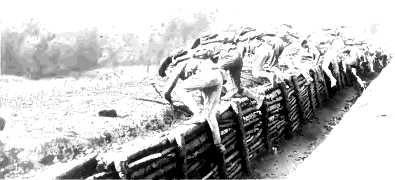<![CDATA[One of the greatest mysteries of the First World War, the one surrounding the practice trenches in Bircham Newton, seems to have been finally solved. According to John Smith, the network of trenches found in the Dreamy Hollow area were actually dug by the Lovat Scouts Unit of the British Army. John finally managed to unravel this ancient mystery with the help of a number of diaries of a man who was involved with the unit. These findings must also be attributed to the landowners Jonathan Burr and Nigel Day, who left no stone unturned in trying to prove a connection between the trenches and the British Army before the archaeological digs of the area begins next year. According to Mr. Smith, the diary offers inputs of the time spent in the Hunstanton area by the Lovat Scouts. Smith states that he might not be an expert in trenches, but he definitely knew a lot about the people who dug them. Smith also went on record to state that he was 100% sure about the fact that these mysterious trenches were actually dug up by the Lovat Scouts. The Lovat Scouts was a unit that was founded by Lord Lovat in the year 1899. The unit mostly contained stalkers, Scottish gillies and shepherds who were famous for their field craft and sharpshooting skills. The Scouts also saw some action in Macedonia during the First World War and did not perform badly either. However, reports suggest that these scouts had spent a considerable time in Hunstanton for training during the early part of the war. Moreover, Mr. Smith has also been empowered with a series of diaries and photographs that detail the time spent by the scouts in the area. Considering the fact that photographs of the First World War are almost impossible to find, these photographs are actually quite valuable. When asked about the Lovat Scouts’ time in Hunstanton, Mr. Smith said that they arrived in the area in the month of April 1915 and left in the month of August or September. It is believed that Mr. Smith shall now try to figure out how the listening post in Hunstanton assisted Sub-Lieutenant Reginald Warneford to take down a German Zeppelin in the year 1915 and become the first British pilot to do so. According to reports, there were masts installed in Hunstanton that picked up transmissions from three of the Zeppelins as they were conversing with their base in Belgium. This helped the British to raise an early alarm and empowered the pilots to take them down early. Mr. Smith states that Hunstanton definitely played a major role in felling the first Zeppelin. It also managed to pick up signals from a fleet in Jutland. An exhibition of these wonderful artifacts –First World War postcards, memorabilia, cigarette cards, a number of photographs and wartime posters – is being put together by Mr. Smith. This exhibition is scheduled to open to the public from Friday to Monday all through the month of August. ]]>
Mystery Surrounding First World War Trench Finally Solved
